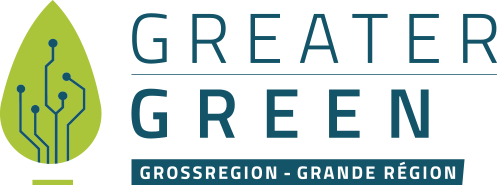These arise from the ongoing socio-economic development dynamics and from the definition of an integrated polycentric and cross-border strategy to enhance the attractiveness and competitiveness of the Greater Region.On 4.3.2020, a workshop was held with representatives from the Greater Region to identify further key projects for the spatial development concept, under the following key objectives adopted by the Greater Region Summit:
• A competitive and innovative Greater Region
• Quality of life by adapting to change and ensuring social and territorial cohesion
• A cross-border and common labour market based on common training courses
• Development of a polycentric metropolitan region using low-emission mobility and connectivity
• A long-term orientation and coordination framework as part of a multi-level logicIn three working groups (Change, Attractiveness, Low-carbon Development) possible projects were discussed.
GREATER GREEN suggested that the cooperation of sectoral clusters should be named as a general goal of lighthouse projects (in addi-tion to the wood cluster listed there).
GREATER GREEN also mentioned the ideas developed by Hydreos in our working group on water, which are in charge of the use of mine water (purification of mine water and use for heating networks). The problem of heavy rainfall / flooding, which we had also identified there, was also introduced (albeit from another side).Irrespective of this, in the working group "Accessibility / Attractiveness"
GREATER GREEN also suggested that the revitalisation of disused railway lines should be considered, citing (Trier-) Ruwer -Hermeskeil and (Saarbrücken-) Sarreguemines -Nancy as examples. In accordance with the concentration of settlement areas on public transport hubs as proposed in the spatial devel-opment strategy, these could serve to relieve conurbations of individual traffic and as development axes in rural areas. Thiswas countered by the cost problems of infrastructure projects -these could also be overcome, for example, in the Upper Rhine in the course of the planned reactivation of Colmar -Breisach (where the Rhine crossing destroyed in the war must be rebuilt). In a second step, the project presentations will be further elaborated in more detail by interested parties.



